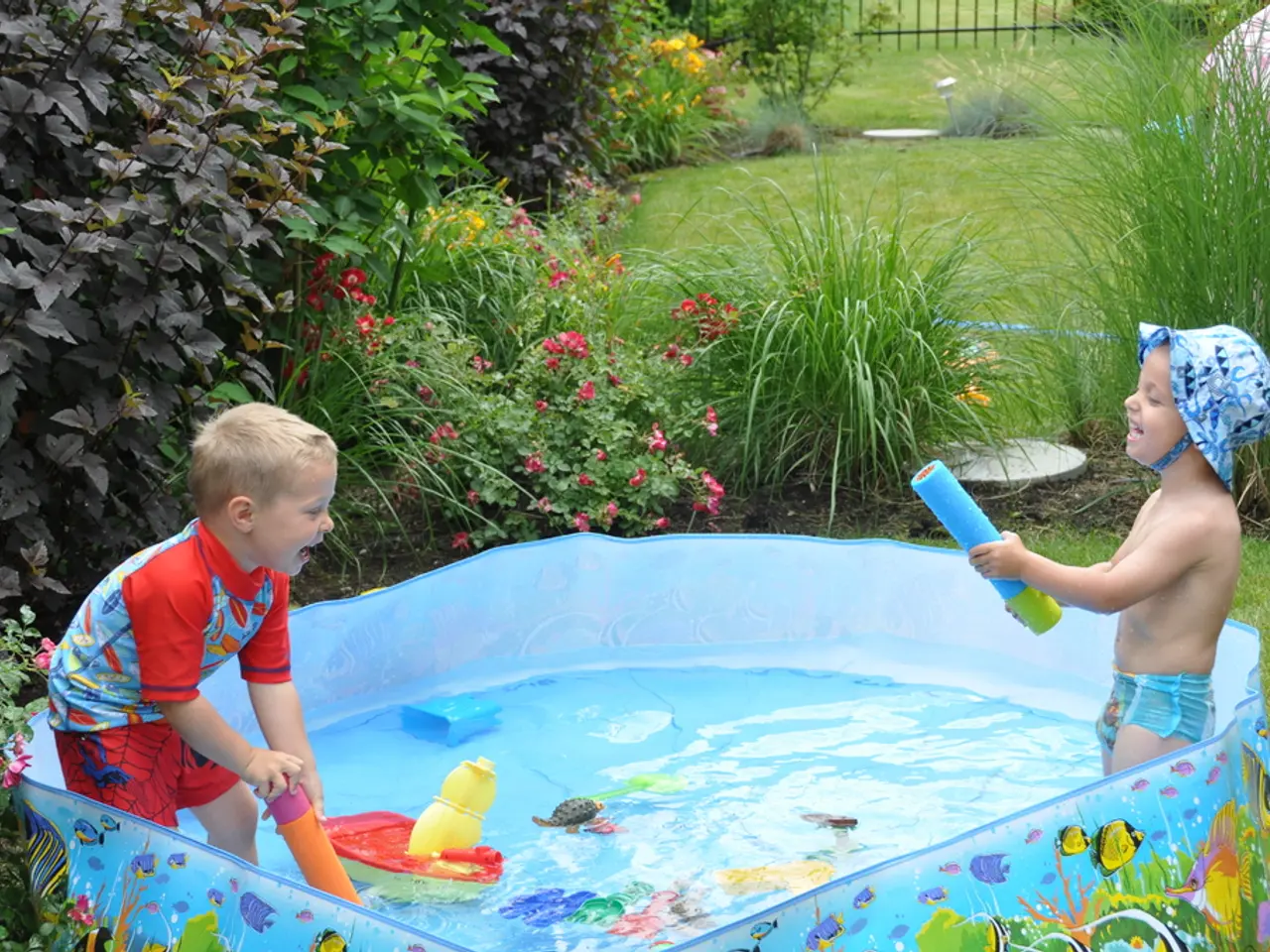Build Your Own Interactive Water Feature for Children
=============================================================================
Building a DIY water wall is an exciting and educational project that offers endless creative opportunities for children. This interactive water feature can be constructed using common items like crates and clear plastic tubing, making it cost-effective and customisable for various outdoor spaces.
Materials Needed
- Plastic or wooden crates (stackable for height and structure)
- Clear plastic tubing sized to fit your design
- Water pump or a gravity feed system
- Connectors or clamps for tubing
- Waterproof sealant or silicone
- Optional: funnels, buckets, or containers to catch or divert water
Instructions
- Design and Assembly
- Stack the crates vertically or arrange them side by side to form the wall structure.
- Drill holes in crates to feed the clear plastic tubing through, allowing water to flow from one crate to the next.
- Thread the plastic tubing through the crates, arranging it so water cascades down through each level, creating a flowing water effect.
- Secure the tubing with clamps or ties to prevent shifting.
- Seal any gaps to avoid leaks (using waterproof sealant).
- Water Source and Pump Setup
- Place a water pump at the bottom to circulate the water back up or use a hose to feed water at the top for gravity flow.
- Connect the pump to the tubing inlet.
- Ensure the pump and wiring are safe for outdoor use.
- Testing and Adjustments
- Fill crates or add water supply.
- Turn on the pump and observe water flow.
- Adjust tubing alignment and crate positioning to optimize flow.
Enhancing the Experience
- Incorporate funnels or small containers inside crates to add variety to water paths.
- Ensure the base is stable and waterproof to avoid splashes and water waste.
- For safety, use low-voltage pumps and supervise children during use.
- It is important to have something at the bottom of the water wall to catch the water and allow for recycling.
Educational Benefits
Water walls provide hours of fun for children as they pour, scoop, and recycle water through the pipes. This interactive play encourages exploration and learning about gravity and water flow.
Additional Tips
- DIY water walls can be creatively constructed using a trellis, fence, or any other structure that tubing can be wrapped around.
- The materials needed to build a DIY water wall include funnels, tubes, pipes, buckets, empty milk cartons, containers, cable ties, and a structure to build the water wall on (such as a fence, crates, or trellis).
Summer Activities
Homemade water walls are a summer activity suitable for both home and school environments. They are part of a collection of 50 summer science experiments available, including a solar oven, paddling pool experiments, bubble snakes, and instructions for making the perfect sand for sand castles. There are also easy water science experiments for kids to try, such as a water-powered rocket, filtering water, learning about osmosis, and density tricks.
Last Updated
This article was last updated on June 19, 2025 by Emma Vanstone.
[1] Inspire My Play: DIY Water Wall with Ikea Equipment [2] Inspire My Play: Colour Mixing Water Wall using a Metal Frame from TTS and Milk Bottles [5] DIY Water Wall with crates and clear plastic tubing for outdoor play
- By constructing a DIY water wall at home, children can blend science and lifestyle by learning about gravity, water flow, and environmental conservation.
- This activity, suitable for both home-and-garden and school settings, encourages kids to engage in environmental experiments, fostering a love for nature and sustainability.
- Parents and teachers can supplement their kids' learning by incorporating fun activities, such as adding containers and funnels to the water wall for a more engaging play experience.
- The DIY water wall project, part of a series of 50 summer science experiments, offers a cost-effective way to keep kids learning and entertained during their summer break.





